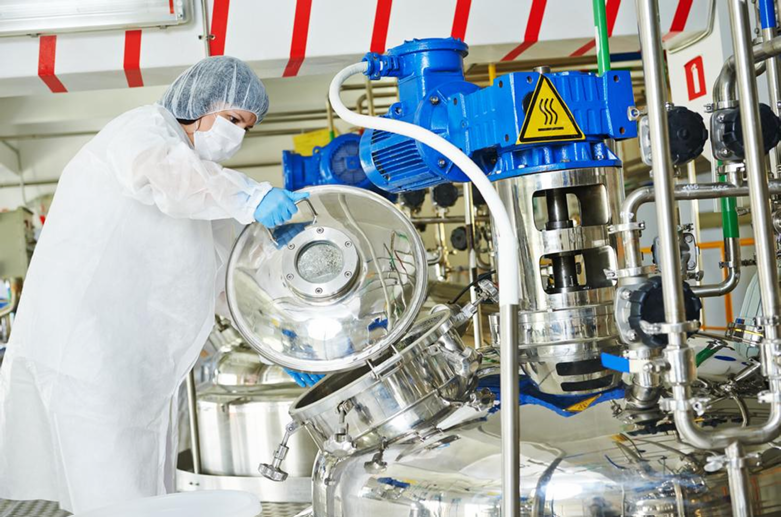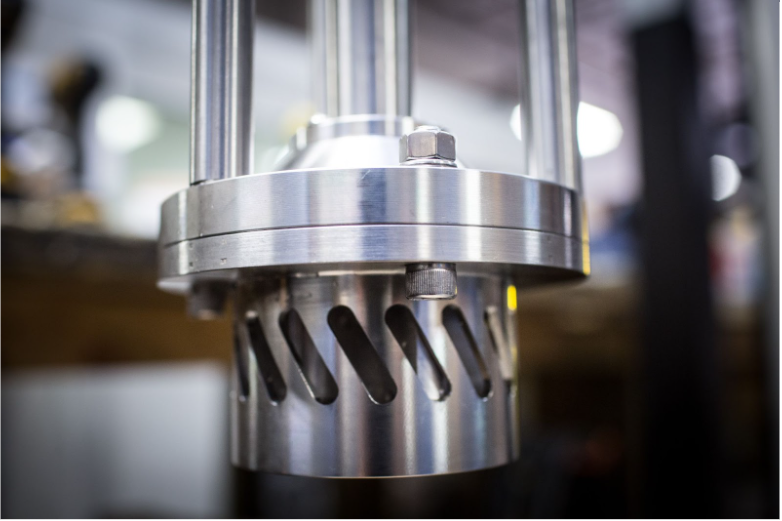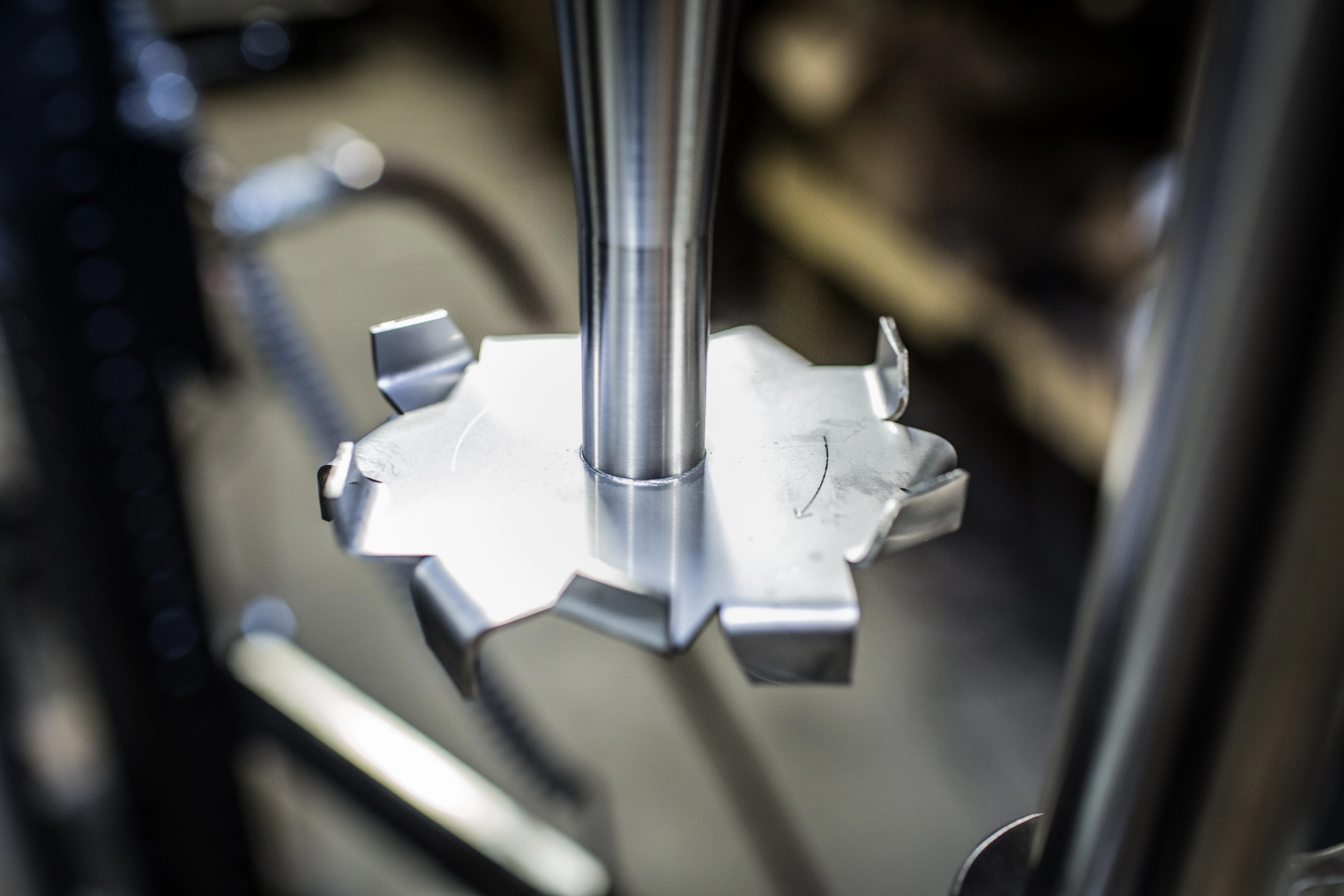8 Types of Mixers Used in the Pharmaceutical Industry
In the precise and regulated world of pharmaceutical manufacturing, the importance of specialized equipment cannot be overstated. Among these, mixers...
The perfect lipstick glides on smoothly. The ideal face cream leaves a flawless finish. A great blush leaves the wearer … blushing.
Achieving this level of perfection in cosmetics relies heavily on one key element: the mixing process.
Cosmetics are booming, with demand for unique formulations at an all-time high. But creating high-quality beauty products isn’t just about having the perfect formula—it's about mastering the mix.
Let’s explore the ins and outs of cosmetic mixers, from the basics to advanced applications.
The world of cosmetics is incredibly diverse. There are creams, lotions, powders, lipsticks, and much more. Choosing the right cosmetic mixer for your products is crucial. The wrong equipment can result in poor product quality and wasted resources.
Here's a look at some of the unique mixing requirements for cosmetic products:
Compared to manual mixing, cosmetic mixers offer a multitude of advantages that can significantly improve your production process and product quality. Here's a closer look at some of the key benefits:
|
Improved Efficiency and Production Speed |
Mixers can mix ingredients faster and more thoroughly than manual methods, saving time and increasing productivity. |
|
Enhanced Consistency and Quality |
Mixers ensure uniform mixing, resulting in a consistent final product every time. |
|
Reduced Risk of Human Error and Contamination |
Automated mixing reduces the chance of mistakes and contamination, ensuring a safer, higher-quality product. |
|
Versatility in Handling Ingredients |
Mixers can handle a wider range of ingredients and viscosities, from light lotions to thick creams. |
|
Scalability for Growing Businesses |
As your business grows, mixers can accommodate larger batch sizes, making it easier to scale production. |
Looking for a custom mixer for your thick cosmetic products?
Learn how Institut Dermed partnered with Mixer Direct to create the perfect solution for their needs and achieve great results.
There are several types of cosmetic mixers available on the market, each specifically designed to meet various needs within the cosmetic industry. From high-shear mixers that efficiently blend creams and lotions to vacuum mixers that eliminate air bubbles for a smoother texture, these machines cater to different formulations and production scales.
Here are the three most common types of cosmetic mixers:
1. High shear mixers
2. Planetary mixers
3. Homogenizers
These machines use high shearing action to create smooth and stable emulsions, ideal for creams, lotions, and liquid products. Cosmetic high shear mixers are particularly beneficial in the formulation of cosmetic products as they significantly reduce particle size and improve the uniformity of the mixture.
By rapidly rotating blades, high shear mixers for cosmetics generate intense shear forces that mix ingredients thoroughly while also incorporating air into the formulation, allowing for better texture and increased product stability.
Planetary mixers are designed to handle a variety of cosmetic formulations, especially those that are thick or viscous, making them an invaluable asset in cosmetic manufacturing.
The unique mixing arm rotates on its own axis as it orbits around the bowl, ensuring thorough mixing from all angles and effectively eliminating any unmixed pockets within the mixture. This design is particularly advantageous for products like heavy creams, ointments, and mud masks that require robust and uniform blending.
Homogenizers play a crucial role in the cosmetic manufacturing process, especially for products that need a smooth and uniform texture.
These machines work by forcing a mixture through a small space at high pressure, breaking down particles to create a fine emulsion or dispersion. This is particularly beneficial for high-oil-content products like creams, serums, and lotions that must maintain a consistent texture without separation over time.
|
Mixer Type |
Ideal for... |
Advantages |
Disadvantages |
|
High Shear Mixer |
Creams, lotions, liquid products |
Efficient, creates smooth textures, reduces particle size |
Can incorporate air, might not be suitable for extremely thick products |
|
Planetary Mixer |
Thick creams, ointments, mud masks |
Handles high viscosity products, ensures uniform mixing |
Can be slower for low-viscosity products, more complex cleaning |
|
Homogenizer |
High-oil content products (creams, serums, lotions) |
Creates smooth textures, prevents separation |
Can be less versatile for other product types, higher energy consumption |
Selecting the ideal cosmetic mixer is more than just a technical decision; it’s a step toward manifesting your creative vision into high-quality products that resonate with consumers. With several types of mixers available, each designed to cater to specific mixing needs and product types, understanding your particular requirements is essential.
Here are some factors to consider when selecting the right cosmetic mixer:
Biotechnology is making waves in the cosmetics industry. It involves using biological processes to create ingredients or active components for cosmetic formulations. Cosmetic mixers can be adapted for these applications, allowing you to efficiently mix these special ingredients with carrier solutions.
Biotechnology has the potential to revolutionize cosmetics by creating more potent, targeted products that address specific skin concerns.
Biotechnology enhances cosmetic formulations by:
There are several frequently asked questions when it comes to cosmetic mixers. We want to make it simple for you and had our team of mixing specialists answer these questions:
Question 1: What are the potential risks of not using the appropriate cosmetic mixer?
Using the wrong mixer can result in poor product quality, inconsistent batches, contamination, increased production costs, and wasted resources. It can also affect the safety and efficacy of the final product.Question 2: How does investing in a high-quality mixer enhance product consistency and quality?
High-quality mixers provide uniform mixing, reduce human error, and ensure consistent product quality across batches. This leads to reliable performance and customer satisfaction.
Question 3: How can mixers accommodate the scalability needs of a growing business?
Many mixers are designed with scalability in mind, allowing for larger batch sizes and increased production capacity as your business grows. Investing in a scalable solution helps manage growing demand without compromising quality.Question 4: What are the advantages of using mixers over manual mixing methods?
Mixers offer improved efficiency, consistency, and speed. They reduce the risk of human error, contamination, and ensure uniform product quality, ultimately leading to higher productivity and cost savings.
From achieving flawless creams and lotions to creating perfectly blended powders and balms, mastering the mix is the cornerstone of cosmetic excellence. By investing in the appropriate cosmetic mixer, you ensure efficiency, consistency, and scalability in your production process.
Don't let your mixing process be an afterthought. It's time to turn your creative vision into reality with the right equipment. Contact us today to discuss your cosmetic mixer needs.

In the precise and regulated world of pharmaceutical manufacturing, the importance of specialized equipment cannot be overstated. Among these, mixers...

In the world of industrial mixing, efficiency and quality are paramount. Among the available mixing equipment, rotor stator mixers stand out for...

Essentially all industrial mixing has one goal -- creating consistent, thoroughly blended products. However, all mixers aren't created equal, so in...